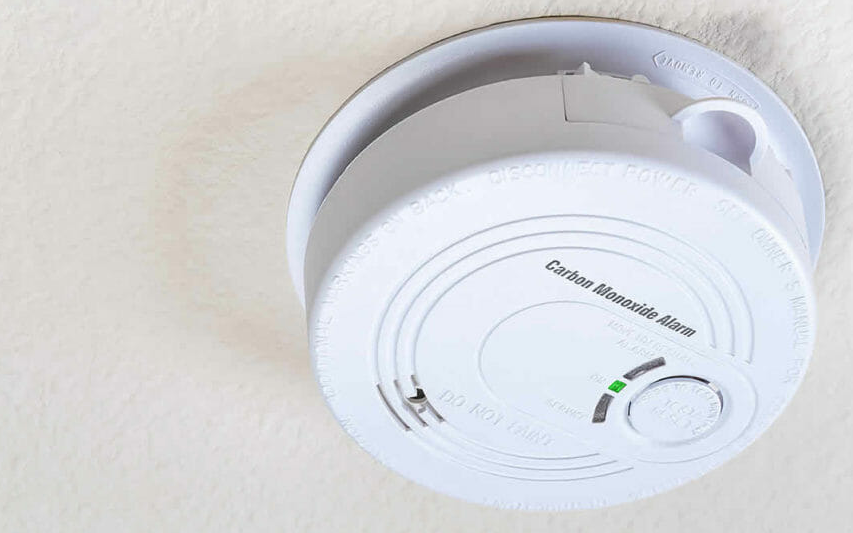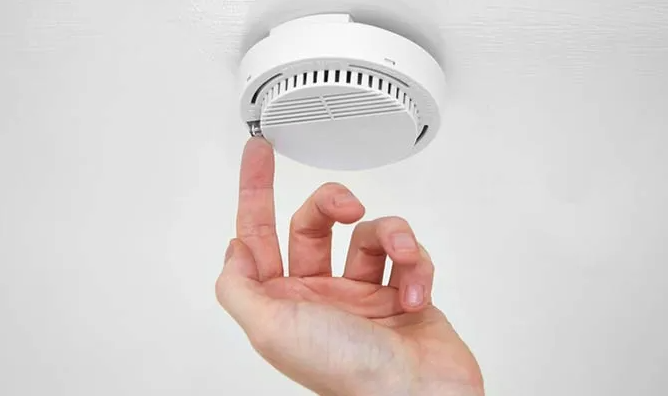1. Introduction to Carbon Monoxide Detectors
Carbon Monoxide detectors are an extremely important aspect of all household premises. These devices can save lives, as they detect Carbon dioxide, an odorless gas that can result in numerous health hazards if inhaled. In this article, we shall discuss the importance of these devices, how one can test their efficiency, and how to maintain them.
2. What is Carbon Monoxide and Why is it Dangerous?
Carbon monoxide is generated during gas, oil, or wood combustion, among other things. When inhaled, it alters the body’s ability to perform normal functioning, causing problems like dizziness or bad headaches and, in extreme conditions, even death. Since it’s colorless and odorless, the only way to know about CO is to have a carbon monoxide alarm in use.
3. Importance of Regular Carbon Monoxide Detector Testing

One important check is to ensure your carbon monoxide detector has been checked regularly. Like any safety equipment, your CO detector’s performance levels can decrease with time. A faulty alarm won’t set off an alert, but it may spell danger as a dangerous level of CO rises, putting your family at risk. But doing the tests regularly puts your mind at ease, knowing your alarm’s reliability and effectiveness.
4. Types of Carbon Monoxide Detectors
Knowing the options for CO detectors can help you pick the one suitable for your house.
4.1 Electrochemical Detectors
They are the most common and effective CO detectors, which rely on a chemical reaction to measure carbon monoxide levels, providing accurate readings and alarms.
4.2 Metal-Oxide Semiconductor Detectors
These detectors detect CO with the help of an electric current that flows through a semiconductor; the flow is interrupted when exposure to carbon monoxide takes place. They are usually cheaper but not as accurate as electrochemical ones.
4.3 Biomimetic Detectors
These detectors are built to imitate the function of hemoglobin, which is the protein responsible for carbon monoxide binding in the blood. These are much more sensitive and, most of the time, are used along with other sensors.
5. How Often Should You Test Your Carbon Monoxide Detector?
According to the National Fire Protection Association, CO alarms should be tested at least once a month. According to the manufacturer guidelines, the batteries should be changed twice a year, and the device itself should be replaced after 5-7 years.
6. Step-by-Step Guide to Testing Your Carbon Monoxide Detector
6.1 Step 1: Gather Your Materials
You should always ensure that you handle all the required material, including a battery, a test button, or a CO test kit. Every model is different, so make sure you check the manual first.
6.2 Step 2: Perform a Manual Test
Usually, CO detectors have a test button built in. Push this button and hold it in the down position to see if the device bleeps. If it does , your device is up and functioning properly. If the alarm does not beep, you should troubleshoot the device.
, your device is up and functioning properly. If the alarm does not beep, you should troubleshoot the device.
6.3 Step 3: Test the Alarm Function
If you want to trigger the test response of the detector, CO test kits can be used, or one can press the button for a device with the gas tester in it. If the alarm goes off, then the detector has been activated.
6.4 Step 4: Check the Battery Life
Even when it is said that an alarm is on, checking the battery is important. Some devices will have battery sensors built into them to do this automatically. Otherwise, testing the battery would be required, and replacing it would have to be done.
7. Common Issues in Carbon Monoxide Detectors and How to Fix Them
7.1 False Alarms
False alarms can occur for various reasons, including the cord itself, curtains, or other smoke makers. As installed, ensure the nuisance such as cigarette smoke or eating steam from a shower is elsewhere to minimize false alerts.
7.2 Low Battery Warning
A low battery warning is a signal that the circuitry requires new batteries. If you’re using a battery powered CO detector, you must change the batteries immediately to avoid alarm activations.
7.3 Detector Not Responding to Test
In the case your detector does not respond to the test, it probably has to reset or changed completely. If it has the unit manual, there are integrated troubleshooting strategies inside.
8. When to Replace Your Carbon Monoxide Detector

No matter how top-of-the-line CO detectors are created, they will always have an expiration date, which usually is around 5 to 7 years. With time, the only sensors inside them lose their effectiveness, making them less valuable. As a rule of thumb, replace every detector after the time specified by the production company.
9. Expert Insights on Carbon Monoxide Detection
Dr. Emily Richardson, a safety expert, emphasizes the importance of placing a CO detector near sleeping areas and in all rooms where gas-burning appliances are used. Regular testing, she states, is crucial for preventing CO poisoning in the home.
10. Future of Carbon Monoxide Detection Technology
With new technologies, CO gas monitors become more advanced and functional. These devices contain many additional features, such as notifications to smartphone applications, real-time alerts, and better sensor technology, making CO detection more accurate and easier to use.
11. Conclusion: Keep Your Home Safe with Regular Testing
CO detectors are essential devices for your safety. When you periodically check and properly maintain the equipment, you reduce the chances of carbon monoxide poisoning. Take measures for your family’s safety as soon as possible, and do not wait for the time when you might regret it.

1 thought on “How to Test a Carbon Monoxide Detector: A Step-by-Step Guide”